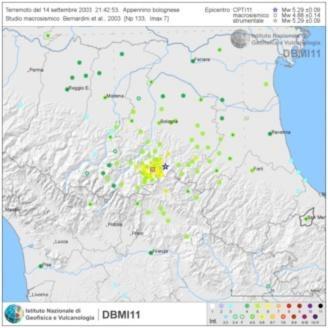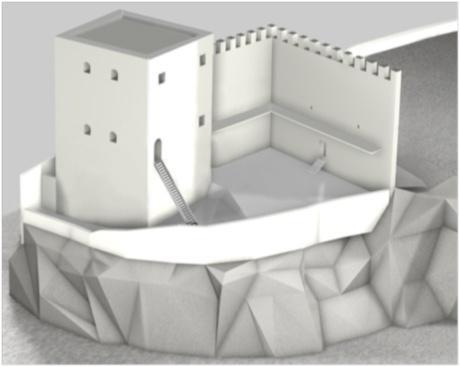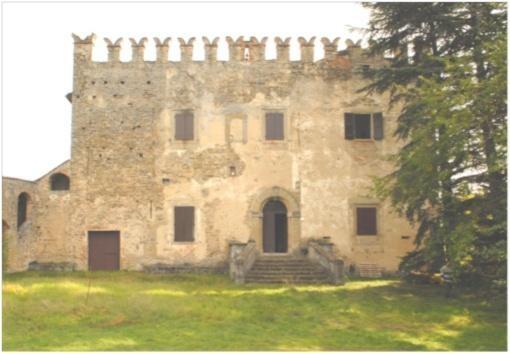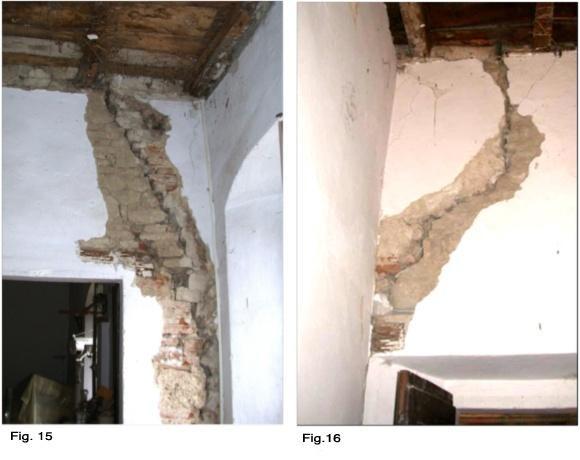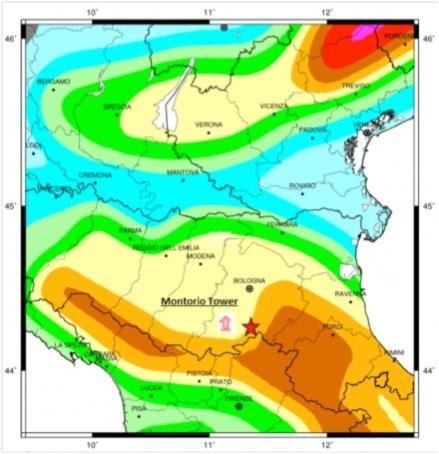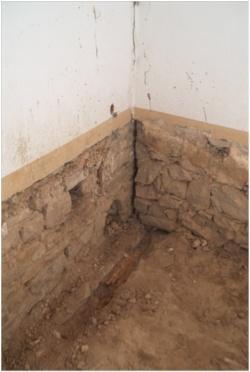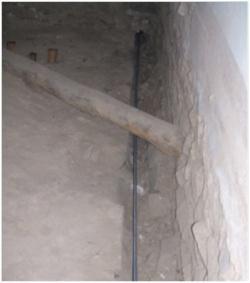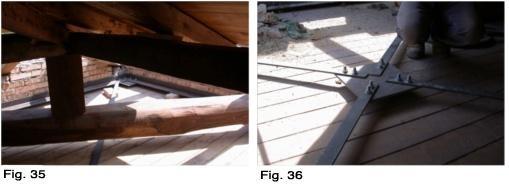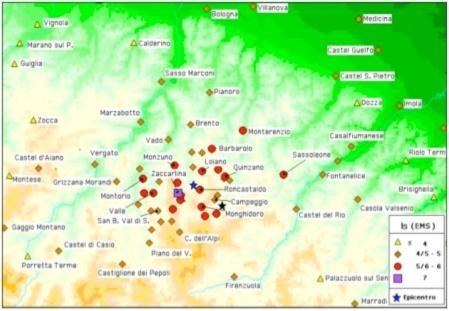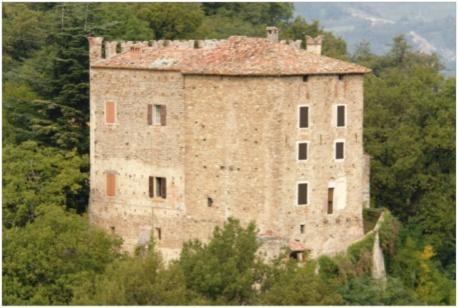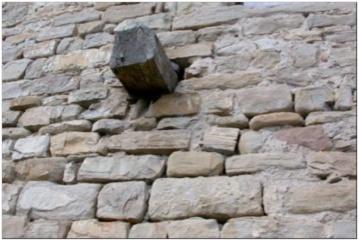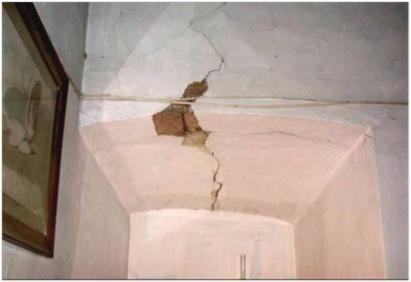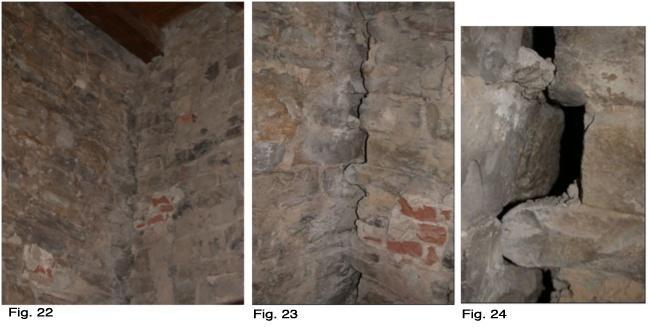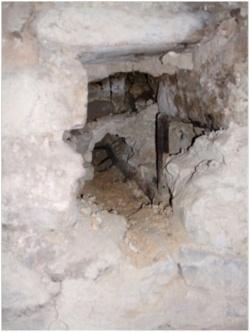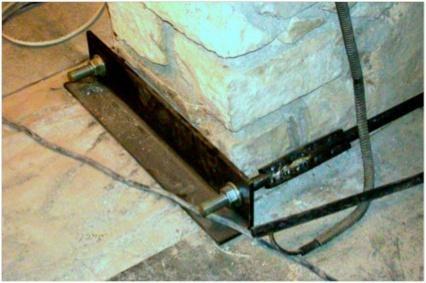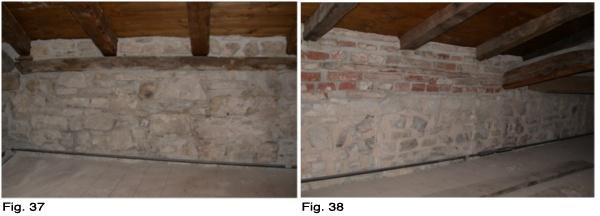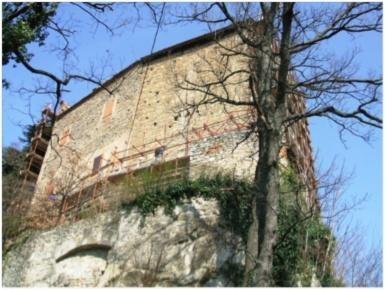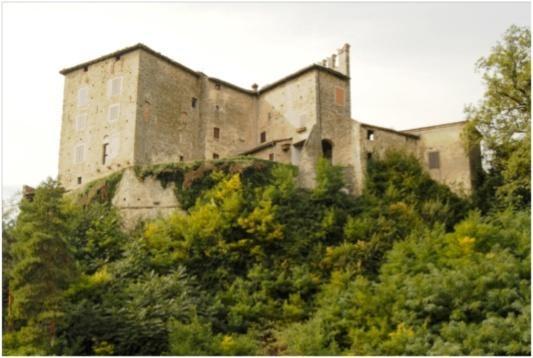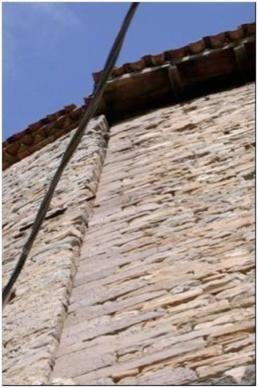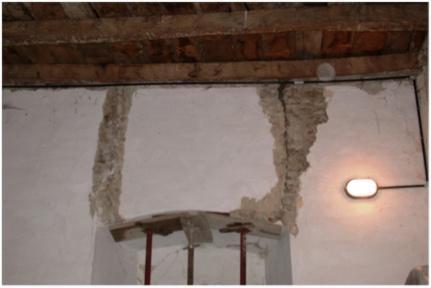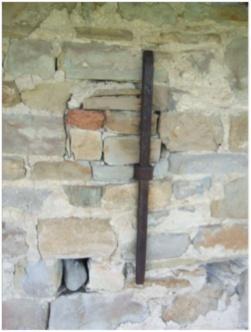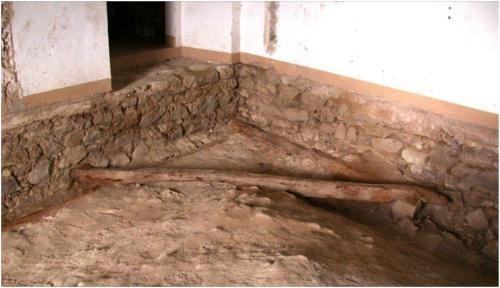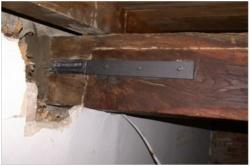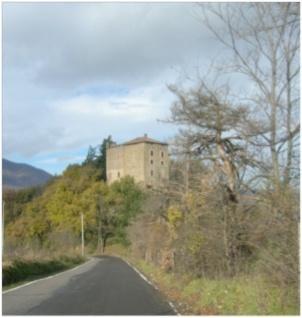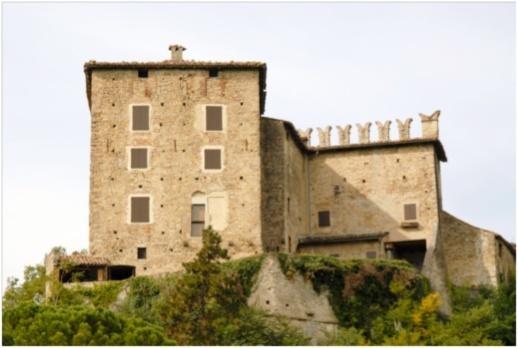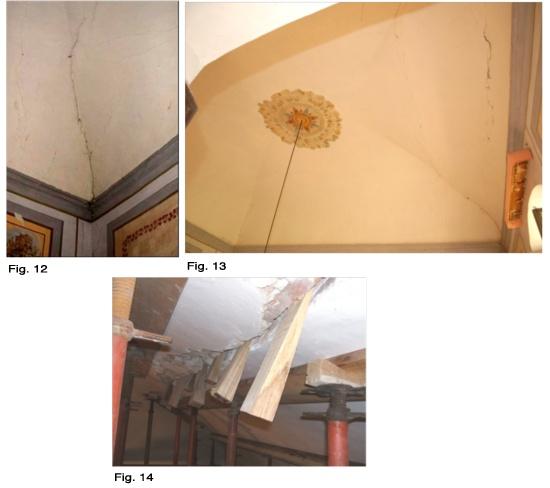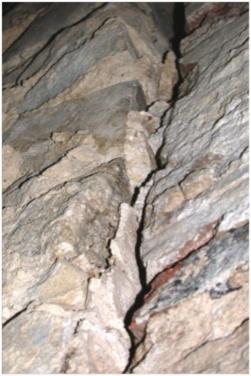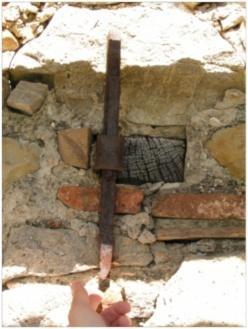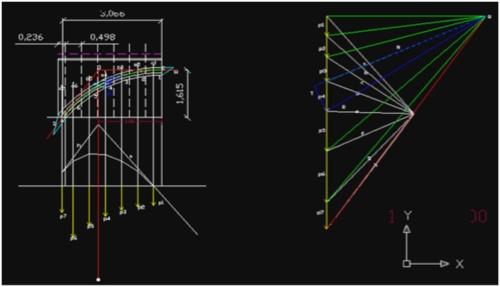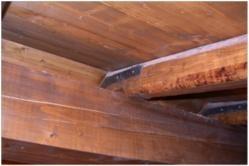The restoration of the Tower of Montorio, Italy, after the 2003 earthquake
Safeguarding architectural heritage against earthquakes is a challenging problem as it demands analysis procedures and intervention criteria which have to meet both conservation and safety requirements. The case-study here presented concerns the restoration of a prominent architectural complex damaged by the 2003 Bolognese Apennines earthquake. ENEA had a supervisory role over the whole rehabilitation process, contributing to define seismic improvement criteria and strengthening intervention techniques consistent with the historical nature of the monument
Il restauro della Torre of Montorio, Italia, dopo il terremoto del 2003
La salvaguardia del patrimonio architettonico e monumentale nei confronti del terremoto è un problema difficile e al tempo stesso stimolante perché richiede l’adozione di procedure di analisi e criteri d’intervento che soddisfino le esigenze di conservazione e di sicurezza. Il caso di studio qui presentato riguarda il restauro di un importante complesso architettonico, danneggiato dal terremoto che nel 2003 ha colpito l’Appennino Bolognese. Nella fase di analisi e nel corso dell’intervento ENEA ha avuto il ruolo di supervisore, contribuendo a definire criteri per il miglioramento sismico e tecniche d’intervento compatibili con la storicità del monumento
DOI: 10.12910/EAI2013-08
Bruno Carpani
Introduction
On September 14th, 2003, an earthquake of moderate magnitude (Ml 5.0; MW 5.3; focal depth 8 km) struck the Northern Apennines, with the epicentre located 30 km south of Bologna, Italy (Figure 1). The highest observed intensity of the seismic event was 7 on MCS scale and 6-7 on the EM-98 scale (Figure 2) [1]. Even though no people were seriously injured, more than 200 buildings, including many historic buildings, were declared totally or partially unsafe. Among these, the Tower of Montorio, an architectural complex the most ancient structure of which dates back to at least the 13th century. Soon after the earthquake, the property owners entrusted ENEA with the task of carrying out damage survey and analysis; then ENEA had a supervisory role on the restoration project, including technical consultancy to the structural designer (Prof. R. Antonucci, University of Ancona). Earthquake damage, architectonic history and structural characteristics of the monument are here described, as well as the methodological approach employed in the Tower restoration and the resulting interventions to improve the seismic performance of the monument.
A brief information about Tower history
The Tower of Montorio stands on the top of a sandstone rocky spur, bounded on three sides by sheer slopes (Figures 3-4). This kind of topographic position is surely suitable for defensive purposes, and in fact, even if the presence of a castle (castrum de Montorio) is attested by XII century codices and fully described in cadastral documents (1235), there is both historical and archaeological evidence supporting the existence of a watchtower belonging to the Longobard fortified frontier (limes) with the byzantine Exarchate around the VIII century [2]. In medieval times, the monument was involved in the struggle between local warring factions of Guelphs and Ghibellines, suffering very heavy consequences. In particular, in 1325 the Tower was object of a reprisal action by the Ghibelline forces, and, as a result, the castle was sacked and fired while the defensive wall was partially torn down. Later centuries saw the Tower lose gradually his military importance in favour of a residential use, as witnessed by the building work from the XVI century to our times.
The historical importance of the monument was recognized soon after the promulgation, in 1909, of the first Italian law on preservation of national heritage, in force of which it has been protected by the Ministry of Cultural Heritage since 1910.
Description of the constructive phases
The whole architectonic complex grew around an original XIII century nucleus, identified by the actual tower, the defense wall and the receptum (Figure 5). The receptum, that is the sheltered inner court where peasants and livestock could take refuge in case of danger, is still perfectly “readable”, and it is the only lasting one in the Bolognese province.
Between 1300 and 1400, a covered porch was added, probably because the tower began to change its function from defense to housing. In the early XVI century an important two-storey addition, consisting of two large vaulted rooms, was built in adherence to the tower. In order to strengthen the building, two large external buttresses were then realized in 1570-80.
Further significant additions in later three centuries led to the present-day configuration (Figures 6-7-8-9). Among the past alterations, particular interest is due to the intervention after the 1869 Vergato earthquake (Imax 7.5, Mw 5.4), when because of the resulting damage the tower was lowered by a few meters. Finally, the past century interventions included the buttressing of the eastern sandstone slope and the overall restoration in the seventies (with the demolition of incongruous superfetations but without any structural intervention).
Structural description
The Tower is a five-level construction (including cellar and garret), with a two-roomed space divided by a central wall, a typical layout of the thirteenth-century tower in the Bolognese Apennine. External dimensions in plan are about 10.6 x 9.3 m, while the height to eaves is 14.5 m. The foundations lay directly on the bedrock. The vertical walls (made by local sandstone, thickness about 1 m. at the ground floor) generally show regular horizontal stone-lines and bigger squared elements on the corners, but somewhere the masonry fabric is inhomogeneous and presents discontinuity due to the subsequent additions (Figures 10-11). The horizontal floors are mainly made by single or double wooden truss frames, with simple plank covered by a light layer on pressed sand or debris. The sixteenth-century addition (cellar, two floors and garret) leans against the N-W tower front and the shelter inner court wall, but the lack of transversal connections is evident. The stone-masonry reveals, compared to the Tower, minor thickness (0.6-0.7 m) and a lower mechanical quality. The raised floor rooms are covered by pavilion vaults, while the cellar is covered by a brick barrel vault. Generally, the old roofs are made by light double wooden frames, a lot of which are in degraded condition. Even if string-courses are absent, longitudinal wooden trusses are located at their place, leaning directly on the top of the perimeter walls with the aim to distribute the static loads. In correspondence of the transversal walls, diagonal struts support the longitudinal roof frame.
Earthquake damage patterns
As pointed out by the structural survey [4], most of the earthquake damage patterns are attributable to damage mechanisms denoting the ineffectiveness of the connections between the structural elements. Furthermore, the tumultuous constructive history of the complex has involved traumatic alterations which have affected seismic behavior negatively. Examples of seismic vulnerability are the presence of inhomogeneous masonry sectors built with different techniques and quality; cavities in walls like built-in wardrobe, niches, etc.; evidence of static defects existing before the seismic event (out of plumbs, detachments, previous cracks, etc.); including deteriorated conditions of some structural elements - in particular, wooden beams.
So, it is possible to identify two main categories of damage: out of plane first-mode mechanism with overturning of the perimeter walls, and damage due to local weaknesses.
To the former it must be ascribed the damage to the pavilion vaults (Figures 12-13-14), composite overturning of the walls (Figures 15-16), floor and wall detachments (Figure 17); to the latter, cracks in platbands and architraves (Figure 18), in association with structural discontinuities, detachment of walled up windows built without proper toothings (Figures 19-20).
Earthquake strengthening of heritage buildings
The modern reflections on seismic protection of architectural heritage in Italy came out after the earthquakes that hit the Friuli and Irpinia regions, in 1976 and 1980 respectively. During the post-seism rebuilding phases only formal safety requirements were taken into account without considering the constructive characters of historical urban centres. This approach, encouraged by specific building regulations, led to a wide use of industrial building techniques and materials like reinforced concrete, at the time thought to be suited to every kind of building but actually inconsistent with the constructive lexicon of the historical masonry fabric. A typical example of this is represented by the systematic replacement of wooden floors with reinforced concrete ones; a practice which led to the loss of one of the most distinguishing features of historical architecture without obtaining any real improvement on safety conditions.
It is obvious that both objectives, safety and conservation, must be effectively pursued.
This critical topic was brought to attention mainly thanks to the research by Antonino Giuffrè [5-6], that led to a paradigm shift in the field of seismic protection of architectural heritage. According to Giuffrè, the frequently claimed conflict between safety and conservation is often only apparent. The problem can be overcome by looking at the issue from the correct perspective, avoiding to address the issue from a partial point of view. “The antiseismic restoration of historical centres must be conjugated, instead, to the dual meaning of “safety” and “preservation”. That is the conjugation of the simple verb “restore”, which isn’t such if it does not preserve, and does not preserve if it does not ensure safety.” [6].
Once it has been acknowledged that the mitigation of seismic risk to cultural heritage is a matter of restoring, it is possible to define a proper methodological approach to the problem.
Such approach to the protection of architectural heritage against earthquakes was developed by Giuffrè in the last two decades of the past century. A fundamental statement is about the effectiveness of historical technologies in seismic zones. According to Giuffrè, as confirmed by almost all post-seism damage reports, historical structural typologies –which have been developed by experience over many centuries– show sufficient resistance to earthquakes when they are built in compliance with the “rule of art”. The comparison with the “rule of art” points out structural weaknesses and suggests correct reinforcement interventions and techniques, which have to be consistent with the constructive lexicon of historical building.
Furthermore, Giuffrè stressed the importance of the typological analysis to the study of the monuments, suggesting to call into play also methodologies proper to archaeological science [7]. Regarding intervention techniques and the need to recover the knowledge of ancient builders, it is worth mentioning again Giuffrè’s clear prose: “It is not a matter of sentimental predilection for traditional techniques, but it concerns the mechanical need to assuring a structural homogeneity which modern materials simply cannot achieve, and the cultural need to preserving the historical choices incorporated into our common heritage.” [6].
The Tower of Montorio’s restoration work
In accordance with the above described methodology, a multidisciplinary approach was employed, adding both the historical and the archaeological perspective to the technical one.
As regards seismic hazard, until 2003 most of the Emilia-Romagna Region (including the Montorio area) was not classified as a seismic zone, although part of its territory had already been mentioned among “high seismic risk areas” in a Ministry Ordinance (n. 2788/1998). But it was only after the collapse of the primary school in San Giuliano di Puglia, occurred during the 2002 Molise-Puglia earthquake, that the Italian seismic hazard classification was finally updated (Ordinance n. 3274/2003) and most of Emilia-Romagna classified as 3rd category, including the municipality of Monzuno to which Montorio belongs. Subsequently, the Ordinance n. 3519/2006 defined the seismic hazard map according to the well-established conventional probabilistic approach.
Regarding cultural heritage, the use of the probabilistic approach was already questioned by A. Giuffrè [6-7]. He argued that, for a certain site, basic local information could be lost in the statistical elaborations based on attenuation laws, averaged between data from other sites of the seismogenic zone. Such approach fits well with cost-benefit analysis, but it seems insufficient to elaborate effective preservation strategies on historical building heritage. With that aim, it seems more useful to define the seismic input in terms of macroseismic intensities, drawing data from both historical seismology and seismography, in order to complement statistical analysis. In the framework of Montorio’s risk evaluation, these studies proved very effective to overcome the generalization inherent in the statistical methods, enabling to assess the evidence of past earthquake damage and the relevant repair work. In fact, the official seismological reports failed to notice the importance of the 1869 Vergato earthquake (Mw 5,4 Imax 7-8), which had considerable effects to the Tower that have been recognised by means of both historical and stratigraphic investigations. Such studies also indicate that earthquakes not only caused significant damage, but also played a decisive role in the evolution of the architectural style of the monument, leading to substantial changes to the floor levels and to the openings layout. It was of special importance discovering the detachment between the orthogonal walls in the tower due to the 1869 earthquake (Figures 22-23-24), clearly proving that a first-mode mechanism took place. At the same time, no serious cracks in the walls associated with that event were detected. This is a damage pattern similar to the one observed after the 2003 earthquake, so it can be inferred from the past seismic evidence that the walls are able to perform a rather monolithic behaviour. It is well known that such a feature is of primary importance when, as is the case, a kinematic approach have to be employed as analysis method to verify the seismic safety of the structure.
It is worth noticing that after the 1869 earthquake three metal tie-rods was inserted through breaches in the walls (Figure 25).
One of the most interesting findings is that effective strengthening techniques were adopted in the early construction phases, testifying the technical skill of past builders (Figure 26). During the restoration works of the pavilion vaults built in the XVI century, a noteworthy detection of historical longitudinal wooden ties, connected to the masonry walls by way of metallic bayonet, (Figures 27-28) occurred; original diagonal wooden trusses - possibly to bending wall corners - were also discovered (Figure 29). The wood was in very poor condition due to dampness, but numerical tests have confirmed the effectiveness of those elements. The static behaviour of the vault itself was checked by using a graphic method (Figure 30); the construction ability of past architects and bricklayers is again confirmed: in fact, the pressure curve always lies inside the inertial core of the section of the vault, keeping it always in compression. Thus, in the framework of the restoration, it was decided to maintain this structural scheme, replacing the wooden reinforcements with steel ones (Figure 31).
The other strengthening interventions were chosen according to the same criteria, using techniques derived from the original structural language.
So, with the aim of improving the structural box behaviour and not to allow first-mode mechanism (overturning of external walls), a widespread introduction of steel ties at each level (in both horizontal directions) has been foreseen (Figures 32); in some cases to connect the floor to the wall, the floor beams themselves were anchored by means of metal plates (Figure 33). In order to reduce the flexibility of floors, double-crossed wooden planks were set wherever possible. The inaccessible area of the garret floor has been reinforced by using a steel stringcourse-tie (Figures 35-36). The roof-to-wall connection was realized with upper stringcourse in reinforced masonry, while the top stone-masonry, due to its degraded conditions, was completely reconstructed in a traditional way according to Giuffre’s proposal (Figures 37-38). In addition to the roof-to-wall connection above described, the thrusting effect of the roof was eliminated to screw the wooden trusses to each other (primary and secondary, Figure 34).
Regarding masonry, generalized mortar injections were avoided; in case of widespread cracks – most of the ones sited above the windows – only localized injections of compatible mortar were made. Local repairs of inhomogeneous or cracked masonry were conducted by means of rip-and-sew technique, with materials similar to the original ones. Furthermore, to improve the monolithic behaviour of walls, artificial diátonoi were inserted, exploiting scaffolding holes.
Conclusions
At the present time, the strengthening works are almost completed, so it is possible to try some conclusions.
As regards vulnerability analysis, in order to overcome the generalization inherent in the statistical methods, a proper evaluation of the seismic hazard should be integrated with historical and archaeoseismological research. The local seismic history and culture research is a matter of special importance, since it reveals how earthquakes struck in that specific site and how they affected those specific buildings built using those specific techniques.
Such studies indicated that earthquakes not only caused significant damage, but also played a decisive role in the evolution of the architectural style of the monument.
As regards damage analysis and strengthening intervention criteria, the actual Tower response to past earthquakes has been detected: two earthquakes, at least, caused out-of-plane overturning of the exterior walls but these didn’t suffer heavy damage except in the case of local weaknesses.
Numerical tests have also shown that the observed damage was mainly due to material decay rather than intrinsic structural weakness. In the light of this, the repair intervention has been carried out using techniques compatible with the historical ones and without altering the original structural configuration.
References
[1] Bernardini F., Camassi R., Ercolani E. (2003). Rilievo macrosismico degli effetti prodotti dalla sequenza sismica iniziata il 14 settembre 2003 (Appennino Bolognese), INGV, www.ingv.it.
[2] Bertacci L., Venturi S., Faglia V., La Torre di Montorio nella montagna bolognese, Istituto Italiano dei Castelli, Roma, 1975.
[3] Amerighi L., Gatti V. (2007). La Torre di Montorio: progetto di restauro, miglioramento sismico e valorizzazione del complesso, Ms.C. Thesis in Architecture, University of Ferrara.
[4] Carpani B., Muzzarelli M., Spadoni B. (2004). Rilievo e analisi dei danni subiti dal complesso edilizio denominato Torre di Montorio (comune di Monzuno) a seguito del terremoto dell’Appenino Bolognese del 14 settembre 2003, ENEA Report PROT-P99Q-001.
[5] Giuffrè A. (1991) Letture sulla meccanica delle murature storiche. Kappa ed., Roma
[6] Giuffrè A. (1993). Sicurezza e conservazione dei centri storici. Il caso di Ortigia, Bari, Laterza.
[7] Giuffrè A. (1988) Monumenti e terremoti. Multigrafica ed., Roma.
Bruno Carpani - ENEA, Seismic Engineering Technical Unit


